Second Floor Center Hallway
The second floor center hall serves several rather practical purposes at once, and yet it is also a uniquely personal space.
Its clearest role is to provide entries and exists to nearly every other room in the house. This requirement means eight doors and two staircases are visible from the center of the small space. Another purpose is to furnish a second central place to talk on the phone (the first is in the Butler’s Pantry downstairs). There is a phone, fax, rolodex, and address book on a round table and an armchair on which to sit and use them.
Despite these practical necessities, a few easy to overlook items give the room its own sentimental yet sober character. The blue armchair, in fact, was one Chet Ashbery usually sat in on evenings in the Sodus farmhouse in the 1930s and 1940s. An inexpensive Popeye trash can tucked under the table is an homage to Ashbery’s beloved cartoon character. A photograph on the side table commemorates an August, 1940 day when Ashbery and his childhood friends Carol Rupert and Mary Wellington performed “The Princess and the Robber Chief” for a Pultneyville audience. The grass cloth walls, more visible here than in the downstairs center hall, reference the Victorian and European-influenced decorative tastes of his great uncle Paul Holling (1872-1957), who owned several homes in Pultneyville which Ashbery admired as a child.
The images on the center hall walls, perhaps inspired by Holling’s attention to translating his European tastes into a distinctly American life, are also a mixture of the two: so, for example, R.B. Kitaj’s ”French portraits” hangs on one wall, a 1915 photograph (one of the earliest) of a train on another, and a classic view of the “Castle of Chillon,” near Montreaux, Switzerland (from his grandparents’ 1926 trip there) is on still another.
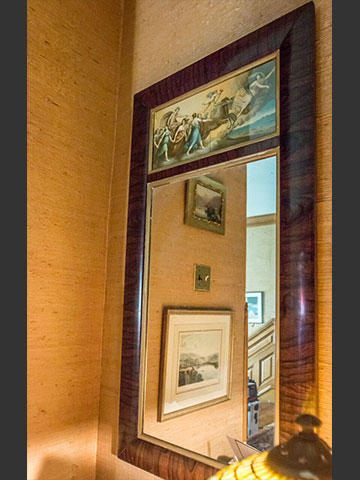
John Ashbery bought this mirror from Inez G. Macwhinnie in her Southampton, New York antique shop.
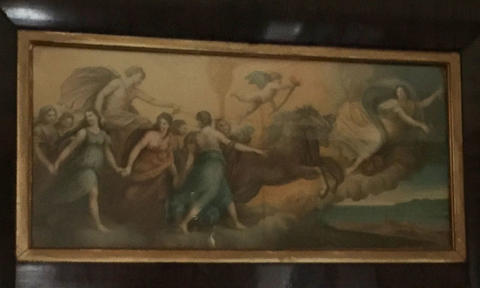
John Ashbery described this painting as: “Another famous chromo of Guido Reni [1575-1642]…the Aurora.” This Reni reproduction is one of two identical images in the house. The other is in the dining room above the right glass cabinet.
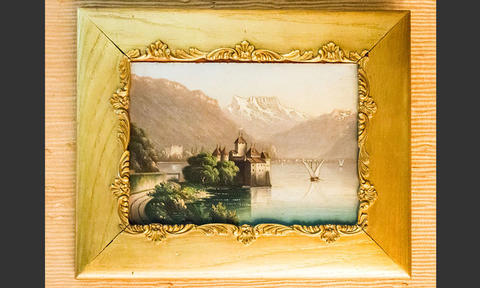
This oil painting of the Chateau of Chillon—which Byron depicted in the “Prisoner of Chillon”—used to hang in the living room of John Ashbery’s grandparents in Pultneyville. They purchased it in Switzerland on their 1926 trip.
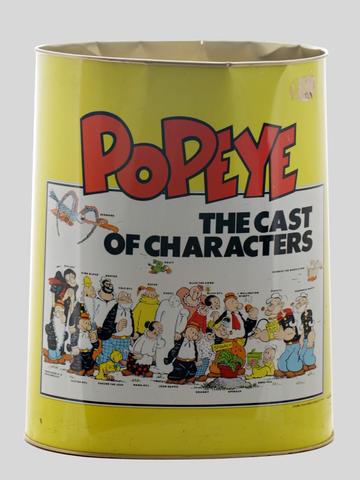
John Ashbery bought this trash can at an Ames department store near Rochester in 1979 because it included images of so many Popeye characters.
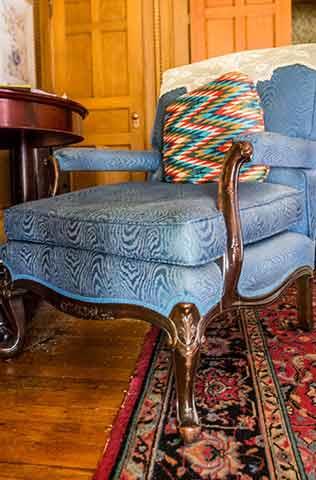
Chester (Chet) Ashbery (1891-1964) used this armchair in the Sodus farmhouse living room. Helen Ashbery brought it to Pultneyville with her in 1965 after she sold the farmhouse. John Ashbery brought his father’s armchair to Hudson after his mother died in 1987.
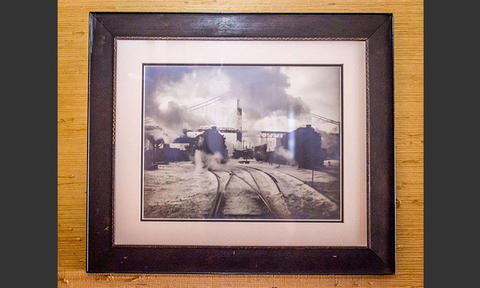
John Ashbery bought this old photograph of a train (circa 1915) in Pultneyville. He never removed the frame, so the photographer, if named, remains unknown.
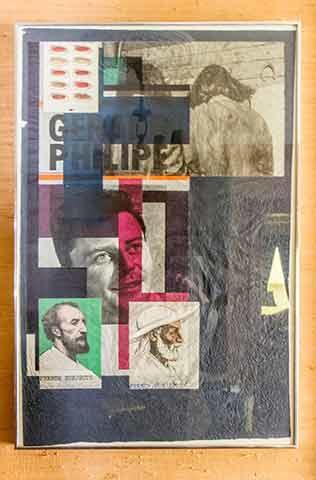
R.B. Kitaj (1932-2007) gave the collage-like painting French Subjects (1974) to John Ashbery in 1975, three years before Ashbery sat for a portrait.
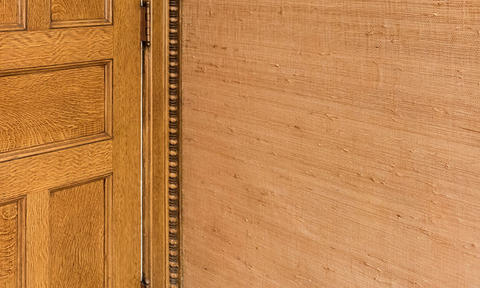
John Ashbery first saw grasscloth used as a wall covering in the front hall of the Captain Throop house in Pultneyville (the home next door to his grandparents’). It had been installed by his grandfather’s first cousin, Paul Holling, in about 1916. Ashbery bought the grasscloth for the house at Wolf Weintraub and paint and wallpaper store in Hudson.
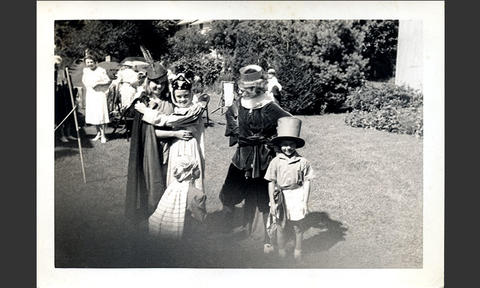
This August, 1940 photo documents the performance of “The Princess and the Robber Chief” in Pultneyville, which starred a twelve-year old John Ashbery as the king and his childhood friends Carol Rupert and Mary Wellington. This photograph was a gift “from Carol to John” on his 80th birthday (July 28, 2007).
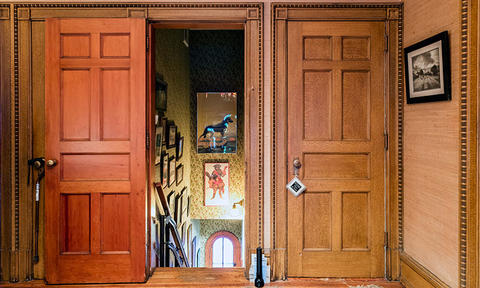
John Ashbery bought this Rin-Tin-Tin, Jr. poster for five dollars in the 1970s at “this wonderful place in New York that no longer exists.” He bought this poster of a Diaghilev production in San Francisco, probably in the late 1970s or early 1980s.
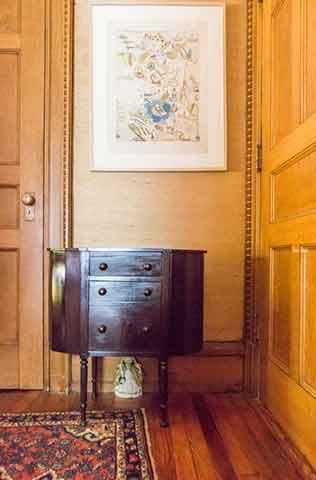
To the right of the art closet is a screenprint, Colleurs Unique (1966), by René Bertholo (1935-2005). This painting that looks like a collage was a gift from the artist, whom John Ashbery met in France. The art closet itself is packed from floor to ceiling with works, including paintings by friends and works that Ashbery created in the 1930s as a student at the Memorial Art gallery and in the early 1940s at Deerfield Academy.
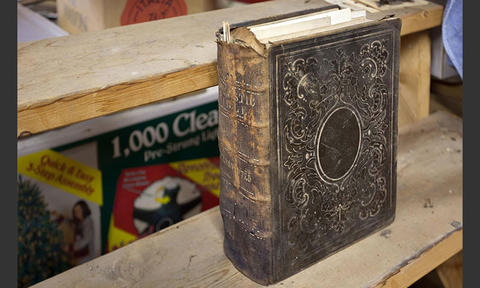
Ashbery’s Hudson house attic is full of detritus from many pasts. Among its many things are: an Ashbery family Bible from the mid-19th century which contains a lock of an ancestor’s hair; books, furniture and a rifle left by the previous owner of the house; and Ashbery’s collection of magazines and French books.
